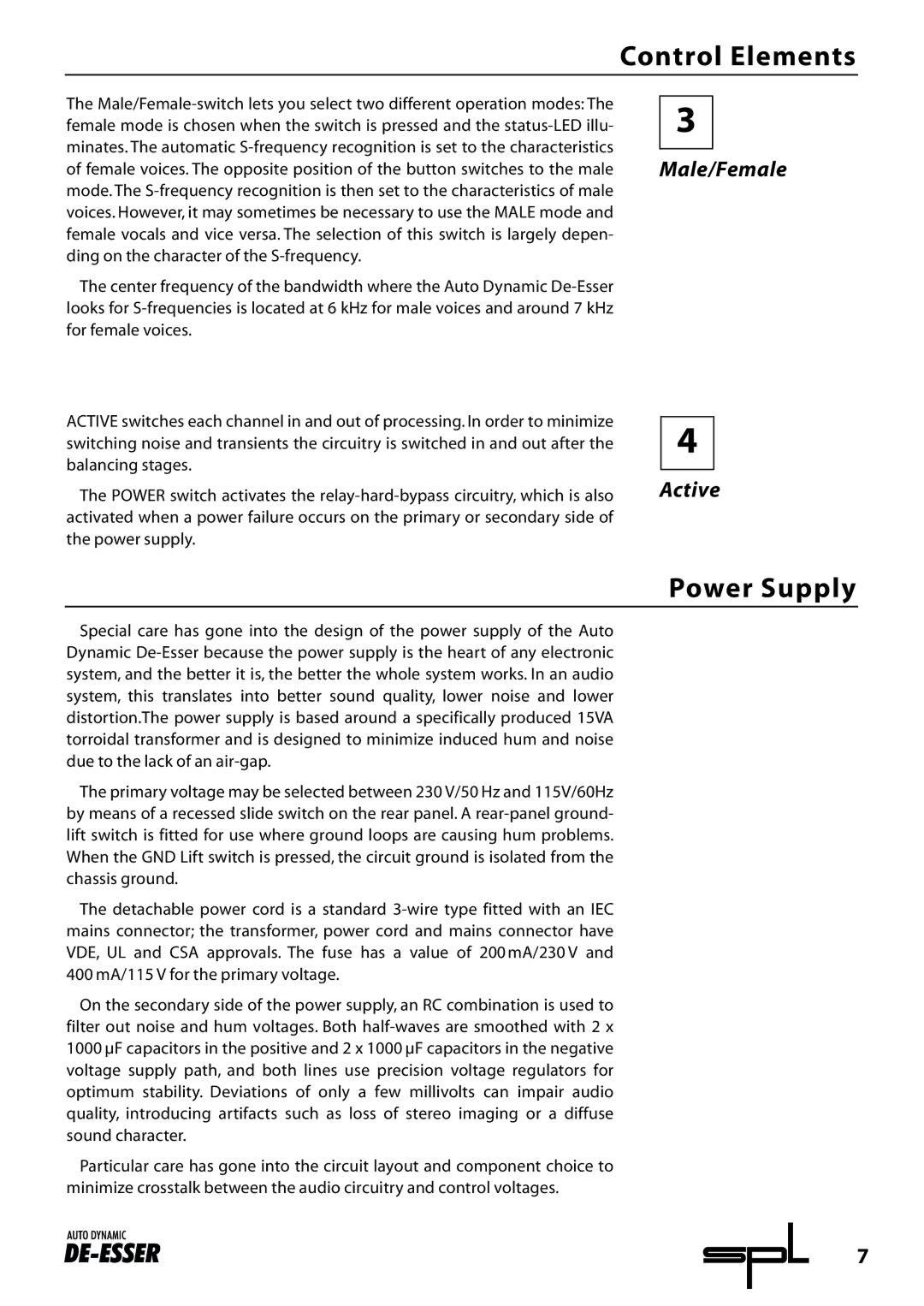Control Elements
The Male/Female-switch lets you select two different operation modes: The female mode is chosen when the switch is pressed and the status-LED illu- minates. The automatic S-frequency recognition is set to the characteristics of female voices. The opposite position of the button switches to the male mode. The S-frequency recognition is then set to the characteristics of male voices. However, it may sometimes be necessary to use the MALE mode and female vocals and vice versa. The selection of this switch is largely depen- ding on the character of the S-frequency.
The center frequency of the bandwidth where the Auto Dynamic De-Esser looks for S-frequencies is located at 6 kHz for male voices and around 7 kHz for female voices.
ACTIVE switches each channel in and out of processing. In order to minimize switching noise and transients the circuitry is switched in and out after the balancing stages.
The POWER switch activates the relay-hard-bypass circuitry, which is also activated when a power failure occurs on the primary or secondary side of the power supply.
Power Supply
Special care has gone into the design of the power supply of the Auto Dynamic De-Esser because the power supply is the heart of any electronic system, and the better it is, the better the whole system works. In an audio system, this translates into better sound quality, lower noise and lower distortion.The power supply is based around a specifically produced 15VA torroidal transformer and is designed to minimize induced hum and noise due to the lack of an air-gap.
The primary voltage may be selected between 230 V/50 Hz and 115V/60Hz by means of a recessed slide switch on the rear panel. A rear-panel ground- lift switch is fitted for use where ground loops are causing hum problems. When the GND Lift switch is pressed, the circuit ground is isolated from the chassis ground.
The detachable power cord is a standard 3-wire type fitted with an IEC mains connector; the transformer, power cord and mains connector have VDE, UL and CSA approvals. The fuse has a value of 200mA/230 V and 400 mA/115 V for the primary voltage.
On the secondary side of the power supply, an RC combination is used to filter out noise and hum voltages. Both half-waves are smoothed with 2 x 1000 µF capacitors in the positive and 2 x 1000 µF capacitors in the negative voltage supply path, and both lines use precision voltage regulators for optimum stability. Deviations of only a few millivolts can impair audio quality, introducing artifacts such as loss of stereo imaging or a diffuse sound character.
Particular care has gone into the circuit layout and component choice to minimize crosstalk between the audio circuitry and control voltages.
7

